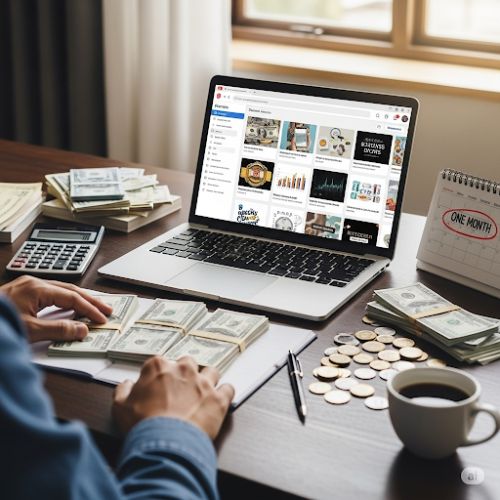How I Made $500 in One Month on Pinterest

Have you ever wondered if it's really possible to make money from Pinterest? I did. For a long time, I saw Pinterest as just a place to save recipes, home decor ideas, and travel inspiration. But then, I stumbled upon a few articles that changed my perspective entirely. They talked about Pinterest as a powerful traffic-generating machine and a goldmine for affiliate marketing.
I was skeptical but intrigued. I decided to challenge myself: could I make a decent side income from this platform in just one month? The answer, to my surprise, was a resounding yes. In my first month of serious effort, I made just over $500, and I'm going to share exactly how I did it.
The Mindset Shift: From Hobbyist to Marketer
My biggest change wasn't about a specific tool or trick; it was about my mindset. I stopped treating my Pinterest account like a personal scrapbook and started viewing it as a business asset. Every pin, every board, and every piece of content had a purpose: to drive traffic and generate income.
Here's the step-by-step breakdown of my journey:
Step 1: Niche Down and Find Your Audience
Instead of pinning everything under the sun, I chose a specific niche: "eco-friendly home and sustainable living." This niche is popular on Pinterest and has many products and services I could promote. I created boards around topics like "Zero Waste Kitchen," "Sustainable Fashion," and "DIY Natural Cleaners." This focus made it easier to attract a targeted audience interested in what I was offering.
Step 2: Master the Art of the Pin
A good pin is a great pin. You can't just slap a random image onto a pin and expect it to perform well. I focused on creating high-quality, visually appealing pins using tools like Canva. My pins included clear text overlays, eye-catching images, and compelling calls to action (e.g., "Learn How to Live Zero Waste," "Shop These Sustainable Finds"). I also used vertical images (2:3 aspect ratio) which perform best on Pinterest.
Step 3: Strategic Affiliate Marketing
This was the core of my strategy. I joined a few affiliate programs relevant to my niche, such as Amazon Associates and smaller, niche-specific programs. Instead of spamming my audience with links, I created valuable content on my blog that solved their problems or provided useful information. For example, I wrote a post titled "10 Easy Swaps for a Sustainable Kitchen" and linked to the products (with my affiliate links) in the article. My pins would then drive traffic to this blog post. This approach felt genuine and built trust with my audience.
Step 4: Consistency is King
You can't pin once a week and expect results. I made a commitment to pin daily, using a scheduling tool to automate the process. I didn't just pin my own content; I also repinned high-quality content from other creators in my niche. This kept my account active and engaged with the community. I focused on pinning a mix of my own pins (leading to my blog) and other relevant content.
Step 5: The Power of Pinterest SEO
Yes, Pinterest is a visual search engine, and you need to optimize for it. I learned to use relevant keywords in my pin titles, descriptions, and board titles. For instance, instead of just "Home Decor," I would use "Eco-Friendly Home Decor Ideas" or "Sustainable Living Room Decor." I also made sure to use long-tail keywords in my descriptions to capture specific searches. This made my pins more discoverable and helped me reach the right people.
Wrapping It All Up
Making $500 in a month wasn't an accident. It was the result of a deliberate, strategic, and consistent effort. I went from being a passive user to an active creator and marketer. If you're willing to put in the time and treat Pinterest like the powerful business tool it is, you can absolutely create a significant side income from it.
© Copyright SorinBlogger
